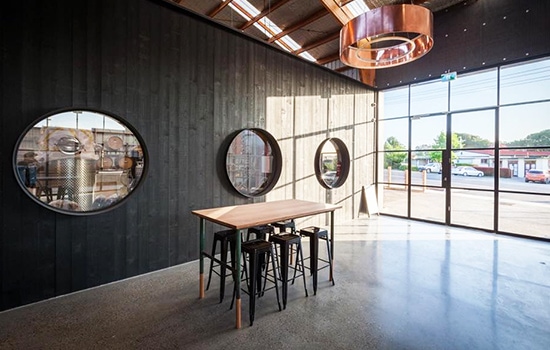The sleek allure of polished concrete has taken the design world by storm. However, underlying this glossy finish is the meticulous process of floor levelling. Let’s dissect this foundational step from multiple angles, exploring its undeniable significance in the realm of polished concrete.
The Aesthetic Perspective: Beauty from Uniformity
A Symphony of Symmetry
The beauty of polished concrete hinges on its smoothness and reflective properties. An uneven surface disrupts this harmony, causing shadows and distortions. Floor levelling ensures that the entire surface is uniformly smooth, paving the way for a flawless finish. This uniformity is paramount, especially in spaces with intricate lighting designs, where every bump or dip can drastically alter the play of light on the floor.
The Nuances of Color and Design
Polished concrete isn’t just about shine; it’s also about color consistency and design integrations, like inlays or stains. A well-levelled floor ensures that color applications are even and that inlays sit flush with the surface. Without proper floor levelling, decorative elements can appear disjointed, undermining the overall design vision.
The Functional Perspective: Durability and Longevity
Consistent Wear Patterns
In bustling spaces—be it commercial hubs or busy homes—an uneven floor can lead to premature wear in elevated areas. This inconsistent wear not only tarnishes the aesthetic but also compromises the surface’s structural integrity over time.
Guarding Against External Elements
A floor with depressions, however small, can collect water or other liquids. Over time, this can lead to issues like efflorescence, where soluble salts rise to the surface and crystallize, or even structural damage. Floor levelling serves as a preemptive strike against such potential hazards, ensuring a surface that’s as resilient as it is radiant.
The Economic Perspective: Cost Savings in the Long Run
Efficiency in Material Usage
An uneven floor demands more grinding, more polishing, and often more sealant to achieve the desired finish. This not only means more material costs but also extended labor hours, escalating the project’s budget.
Reducing Future Liabilities
A floor that hasn’t been properly levelled may require frequent touch-ups or even a complete redo in the future. Such unforeseen expenses can be a financial strain. By investing in meticulous floor levelling initially, one safeguards against potential economic pitfalls down the road.
The Artisan’s Perspective: Crafting Perfection
The Satisfaction of Mastery
For artisans, creating a polished concrete floor is a journey, a testament to their skills and dedication. Floor levelling is an essential chapter in this journey. By ensuring the surface is immaculate from the get-go, they set the stage for each subsequent step, allowing their expertise to truly shine through.
The Legacy of Craftsmanship
An artist’s work speaks for them long after they’ve left the scene. A perfectly polished concrete floor serves as a lasting legacy of their craftsmanship. Proper floor levelling, in this context, is not just a phase in the process; it’s a commitment to excellence.
The Environmental Perspective: Sustainable Practices in Levelling
Eco-friendly Materials and Methods:
Modern floor levelling techniques emphasize sustainability. The materials used are often sourced responsibly, with reduced carbon footprints. Additionally, techniques that minimize waste and resource consumption are favored, making the levelling process greener.
Longevity Equals Sustainability
A levelled floor, by virtue of its durability, reduces the need for frequent replacements or refurbishments. This longevity indirectly promotes sustainability by minimizing resource use and waste over time.
The Technological Perspective: Innovations in Levelling
Laser-guided Precision
With advancements in technology, floor levelling has seen the integration of laser-guided tools that ensure pinpoint accuracy. These innovations lead to quicker turnaround times and heightened precision.
Self-levelling Compounds
In the ever-evolving world of construction, self-levelling compounds are a game-changer. These compounds, when poured, naturally find a level, reducing manual labor and increasing consistency.
The Health and Safety Perspective: A Level Floor is a Safer Floor
Reduced Trip Hazards
Uneven floors are notorious for causing trips and falls. By ensuring a levelled surface, potential hazards are significantly reduced, making spaces safer for inhabitants and visitors alike.
Improved Indoor Air Quality
Modern floor levelling compounds are often formulated to be low in volatile organic compounds (VOCs), promoting better indoor air quality and reducing health risks.
The Maintenance Perspective: Easier Upkeep with Levelled Floors
Simplified Cleaning
A well-levelled floor, being uniformly smooth, is easier to clean. There are fewer nooks and crannies for dirt to hide, making maintenance straightforward and efficient.
Enhanced Resistance to Stains and Damage:
Levelled floors, when polished, offer a consistent seal. This uniformity enhances the floor’s resistance to staining agents and potential surface damage, ensuring it remains pristine with minimal effort.
The Historical Perspective: Evolution of Floor Levelling
From Rudimentary to Refined
Floor levelling, like all construction practices, has a rich history. From basic methods employed in ancient civilizations to today’s technologically advanced procedures, this section delves into the evolution of floor levelling techniques over the ages.
Conclusion: Celebrating the Multifaceted Marvel of Floor Levelling
While polished concrete is the star of the show in many architectural masterpieces, it’s essential to appreciate the unsung hero—floor levelling. As this article showcases, floor levelling is not just a foundational step but a multidimensional practice that impacts aesthetics, functionality, economics, and more.
